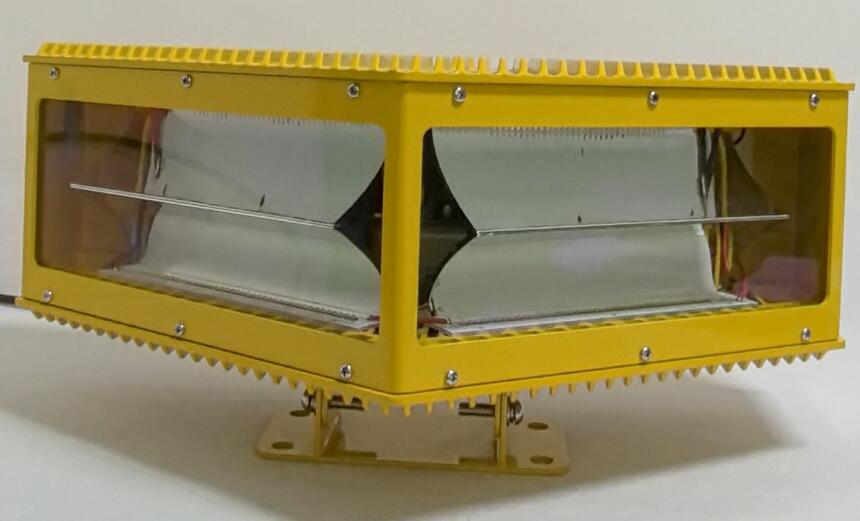
In the complex and fast-paced world of aviation, safety remains the top priority. Among the various technologies that contribute to this safety, the aircraft warning beacon plays an essential role in enhancing visibility and preventing accidents. These beacons serve as a vital signal for both pilots and ground personnel, helping to avoid collisions, guide aircraft to safety, and ensure smoother operations at night or in poor visibility conditions.
What is an Aircraft Warning Beacon?
An aircraft warning beacon is a type of visual signaling device mounted on structures such as tall buildings, towers, cranes, and other elevated objects. These beacons emit a bright light, usually in flashing patterns, to warn pilots of obstacles in their flight path. By making these structures visible from a long distance, they provide crucial information to pilots, particularly when they are flying at low altitudes.
In many cases, aircraft warning beacons are required by aviation regulations for structures that exceed a certain height. These beacons not only protect aircraft from colliding with tall obstacles but also play a key role in ensuring the safety of the surrounding airspace.

Importance of Aircraft Warning Beacons in Aviation
The importance of aircraft warning beacons lies in their ability to mitigate the risk of accidents and provide essential information to pilots in various flying conditions. For example, at night or during low-visibility conditions caused by fog, heavy rain, or snow, pilots may find it difficult to see towering structures in their flight path. An aircraft warning beacon ensures that these obstacles are illuminated and easily detectable.
|
aircraft warning beacons |
SW3 |
|
aircraft warning beacon |
5TR5 |
The devices also serve to help aircraft navigate through crowded airspace, particularly around airports where tall buildings, radio towers, and other structures are common. The visibility provided by these beacons prevents pilots from veering off course and colliding with such obstacles, which could otherwise lead to serious accidents.
Types of Aircraft Warning Beacons
There are different types of aircraft warning beacons, each designed for specific purposes. The most common types include:
Low-intensity beacons: These are typically used for structures under 150 feet in height. They are less powerful but still provide sufficient illumination for aircraft to detect obstacles at a distance.
Medium-intensity beacons: These are used for taller structures, ranging from 150 feet to 500 feet. They offer a brighter, more visible flash pattern and are often used for buildings, towers, and masts in urban environments.
High-intensity beacons: Designed for extremely tall structures such as radio towers or skyscrapers, these beacons are very bright and can be seen from miles away. They are essential in preventing accidents around high-risk zones such as airports and heliports.
Obstruction light systems: These beacons may be part of a comprehensive lighting system that includes steady or flashing lights at different points along a structure to enhance visibility from all angles.
How Aircraft Warning Beacons Work
The basic principle behind an aircraft warning beacon is simple: it emits a flashing light that is visible from a long distance, providing a clear visual signal to pilots. The light is usually a bright, highly visible color like red or white, depending on the regulations governing its use.
Flashing lights are often used because they stand out more than steady lights, especially in low-visibility conditions. Some beacons are designed with a specific frequency or pattern of flashes that can be recognized by pilots to identify the type of structure they are approaching.
In many cases, aircraft warning beacons are equipped with sensors to adjust the brightness and flash frequency depending on the ambient light levels. During the day, the beacon may not flash as brightly to reduce energy consumption, while at night or during poor visibility, the beacon can increase its intensity to ensure maximum visibility.
Regulations and Standards
The installation and operation of aircraft warning beacons are governed by strict regulations to ensure their effectiveness in preventing accidents. In the United States, the Federal Aviation Administration (FAA) provides detailed guidelines for the installation of obstruction lighting systems, including the placement, intensity, and color of the beacons. The International Civil Aviation Organization (ICAO) also has global standards for aircraft warning systems, which many countries adhere to for consistency in aviation safety protocols.
For example, structures over a certain height (typically 200 feet) must be equipped with either low, medium, or high-intensity aircraft warning beacons. These regulations are in place to ensure that pilots are given sufficient warning of obstacles in their path, particularly when operating in areas with limited visibility.
Advancements in Aircraft Warning Beacon Technology
In recent years, advancements in lighting technology have significantly improved the efficiency and performance of aircraft warning beacons. LED technology, in particular, has made these beacons more energy-efficient and longer-lasting. LEDs consume far less power than traditional incandescent bulbs, allowing beacons to operate for longer periods without frequent maintenance or bulb replacement.
Additionally, LED-based beacons are more durable and can withstand harsh weather conditions, such as extreme temperatures, heavy winds, or corrosive environments. This increased reliability is crucial in maintaining the safety of aviation operations, especially in remote or difficult-to-access locations.
Another key advancement is the integration of remote monitoring systems. These systems allow for real-time tracking and diagnostic checks of the beacon’s performance. If a beacon fails or requires maintenance, ground personnel can be notified immediately, minimizing downtime and ensuring that safety measures are never compromised.
Conclusion
The aircraft warning beacon is a small but vital component of modern aviation safety. Its primary purpose is to ensure that pilots can easily identify obstacles in their flight path, reducing the risk of collisions and accidents. With various types of beacons designed for different structures and advancements in lighting technology making them more efficient and reliable, these beacons continue to play a critical role in keeping the skies safe.
As aviation technology advances and the need for safe, efficient air travel grows, aircraft warning beacons will remain indispensable in helping pilots navigate the complex airspace around us.